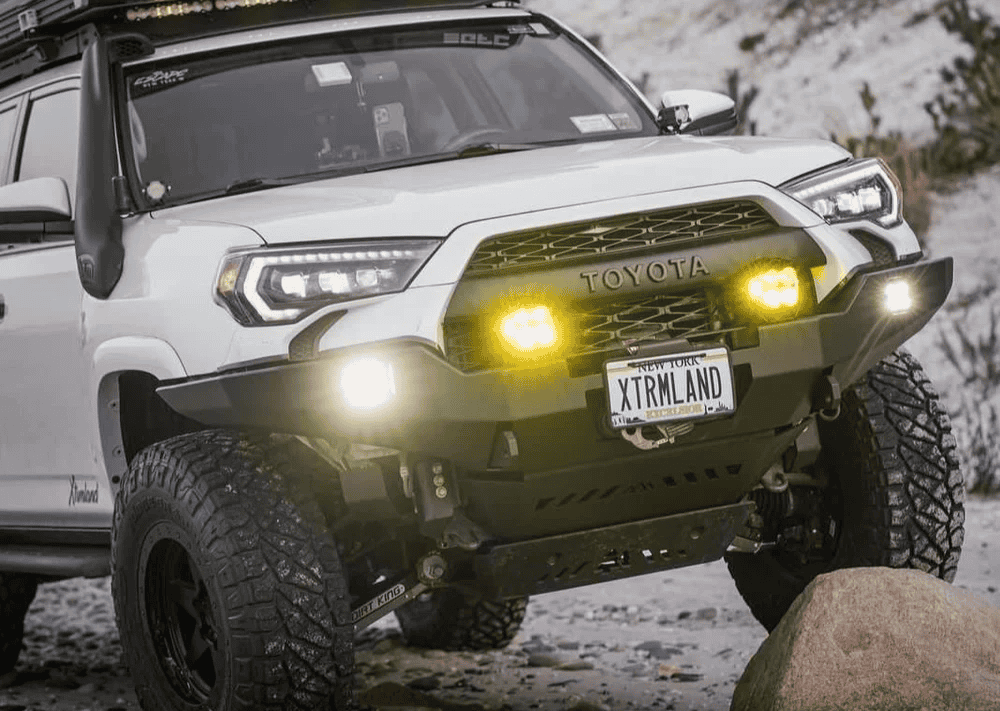Overland Vehicles

A fiberglass truck camper uses a molded shell that acts like a hull, shedding water and dust while minimizing seams. Compared with wood framed or aluminum skinned designs, a fiberglass truck camper often brings better long term weather sealing and fewer places for corrosion or rot to start. The smooth exterior can reduce wind noise on highway runs and is easy to wash after a muddy trail exit. Many builders use cores and reinforcements at stress points so jacks, tie downs, and roof racks keep their strength over time. In some markets you will see the term fibreglass truck camper used interchangeably with fiberglass truck campers, and the construction principles are the same.
The appeal off pavement is straightforward. Shell rigidity keeps doors and windows aligned when the truck frame twists. Less flex at openings means fewer leaks during storms and fewer squeaks on washboard. For travelers who value a clean look and simple upkeep, a fiberglass pickup camper offers that boat like durability in a compact package.
Before choosing any slide in, confirm real payload on your truck as it will be loaded for travel. Payload is curb weight subtracted from gross vehicle weight rating and it must cover the fiberglass truck camper, water, fuel, passengers, tools, and recovery gear. Next, check center of gravity marks on the camper and compare them with the axle location called out by the truck maker. A camper that sits too far back lightens steering and can upset braking on steep dirt descents.
Tie down geometry matters. Frame mounted tie downs distribute forces better for rutted tracks than bed stake pocket anchors. Use spring loaded turnbuckles to dampen shock loads and reduce stress on the shell. Tires and wheels need the right load index and sidewall strength. For offroad truck campers, many drivers move to all terrain tires with proper pressure management to balance traction and stability.
Suspension tuning helps the truck stay level and predictable. Weight rated rear springs or leaf add ons paired with quality shocks control oscillation when a fiberglass slide in camper is aboard. Air springs can be effective as trim tools when used with proper damping and bump stop engagement. The goal is a composed ride without excessive rear sag or head toss.
A fiberglass slide in camper maximizes truck bed compatibility and keeps resale options open. It can be lighter than a full flatbed conversion and maintains a low profile for tight forest routes. Flatbed campers trade bed walls for rectangular storage volume and can lower the center of gravity because tanks and cabinets sit wider and lower. If you plan long trips with heavy water and batteries, a flatbed can offer better packaging, while a traditional fiberglass pickup camper is ideal for mixed daily driving and weekend trails.
Systems that survive corrugations are simple, well supported, and serviceable. Electrical setups benefit from lithium batteries mounted near the axle line, a DC to DC charger tied to the alternator, and solar sized for your daily draw. Keep cables strain relieved and fuse blocks accessible. Water tanks should use flexible lines with proper clamps and an easily drained layout for freezing climates. Ventilation through roof fans and screened windows helps with condensation control, which protects the fiberglass interior liner and keeps bedding dry.
Interior layouts for offroad truck campers reward low mass high function choices. Use positive latches, aluminum or composite cabinetry, and soft close hardware to limit rattles. Choose a cook surface that works in wind and altitude, and store fuel safely. For heating and hot water, diesel fired units sip fuel from the truck and keep propane storage minimal. Maintenance remains simple with a fiberglass shell. Inspect gelcoat, touch up scratches with color matched paste, and periodically reseal roof accessories to preserve the envelope.
Underestimating weight is the fastest path to poor handling. Start with a fiberglass truck camper model whose base weight leaves margin for water and power upgrades. Another frequent error is skipping suspension tuning and relying only on air bags. Use matched shocks and springs first, then add air as needed. Finally, do not ignore tie down alignment. Misaligned anchors transfer stress into the shell and can cause cracks over time.
If you want a balanced offroad camper truck that drives confidently on rough roads and feels relaxing at camp, a coherent plan is everything. That means choosing the right fiberglass truck camper or fiberglass truck campers that match payload, fabricating strong tie downs, and integrating power and water systems designed for vibration and dust.
This is the kind of project our team handles daily. We blueprint suspension, power, mounts, and storage to fit your goals, then execute cleanly so the rig feels like one system. Explore our Overland rigs to see how we think about capable travel. When you are ready to tailor mounts, racks, bumpers, lighting, and inside systems around a fiberglass slide in camper, our Custom overland upfit page explains the process. Curious about our build approach and customer care from handoff to first camp night? Visit Why choose OZK Customs for more.
Tell us where you roam, what you pack, and how you like to camp. We will turn those answers into a plan that keeps weight in check, systems reliable, and the fiberglass pickup camper ready for real trails. Your route is waiting.
Ready for a purpose built offroad camper truck that feels planted on rough roads and simple to live in off grid? Tell us how you travel and we will design a fiberglass slide in camper setup, tie downs, suspension, and power system that match your truck’s real payload. Start your custom plan today.
ADDRESS:
6159 E Huntsville Rd, Fayetteville, AR 72701
PHONE:
(479) 326-9200
EMAIL:
info@ozkvans.com